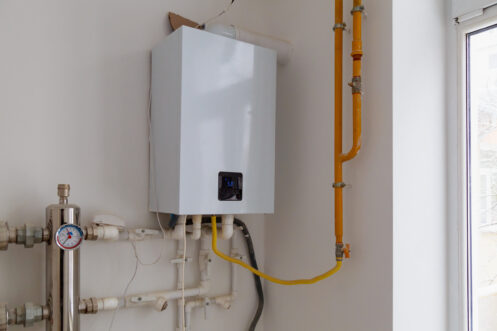Ways to Properly Care for Your Home's Hot Water System
Ways to Properly Care for Your Home's Hot Water System
Blog Article
What are your beliefs about Water Heater Maintenance Tips You Can't Afford to Forget?

Warm water is necessary for everyday comfort, whether it's for a rejuvenating shower or washing dishes. To guarantee your warm water system runs successfully and lasts much longer, normal maintenance is vital. This short article gives functional pointers and understandings on exactly how to keep your home's hot water system to prevent disturbances and costly repair services.
Intro
Keeping your home's warm water system might seem overwhelming, however with a few straightforward steps, you can guarantee it operates efficiently for many years to come. This guide covers whatever from understanding your warm water system to DIY upkeep tips and recognizing when to contact professional assistance.
Importance of Maintaining Your Warm Water System
Regular upkeep not just expands the life expectancy of your warm water system but additionally ensures it runs efficiently. Ignoring maintenance can cause decreased effectiveness, greater energy expenses, and also premature failing of the system.
Signs Your Warm Water System Demands Maintenance
Understanding when your warm water system needs focus can avoid significant concerns. Look out for indications such as irregular water temperature level, unusual sounds from the heater, or rustic water.
Recognizing Your Warm Water System
Before diving into upkeep tasks, it's valuable to recognize the standard components of your hot water system. Normally, this consists of the water heater itself, pipes, anode rods, and temperature controls.
Monthly Maintenance Tasks
Normal regular monthly checks can help catch small problems prior to they escalate.
Flushing the Hot Water Heater
Flushing your hot water heater gets rid of debris buildup, improving effectiveness and extending its life.
Monitoring and Changing Anode Rods
Anode poles prevent corrosion inside the tank. Examining and replacing them when worn out is important.
Checking and Changing Temperature Level Setups
Changing the temperature level settings ensures optimal performance and safety.
DIY Tips for Upkeep
You can execute numerous upkeep tasks yourself to keep your hot water system in leading problem.
Looking for Leakages
Routinely inspect pipes and links for leakages, as these can cause water damages and higher bills.
Checking Pressure Relief Valves
Testing the stress safety valve guarantees it works correctly and protects against extreme stress accumulation.
Protecting Pipes
Shielding warm water pipelines minimizes warm loss and can conserve power.
When to Call an Expert
While DIY maintenance is beneficial, some issues call for expert competence.
Complex Issues Calling For Expert Aid
Examples consist of significant leaks, electric issues, or if your water heater is continually underperforming.
Routine Specialist Maintenance Benefits
Specialist maintenance can consist of complete evaluations, tune-ups, and making sure compliance with safety and security requirements.
Conclusion
Routine maintenance of your home's warm water system is essential for efficiency, durability, and cost financial savings. By following these pointers and knowing when to look for expert help, you can ensure a reputable supply of warm water without unforeseen interruptions.
How to Maintain an Instant Hot Water Heater
Before tinkering with your hot water heater, make sure that it’s not powered on. You also have to turn off the main circuit breaker and shut off the main gas line to prevent accidents. Also turn off the water valves connected to your unit to prevent water from flowing into and out of the appliance. 2. When you’re done, you have to detach the purge valves’ caps. These look like the letter “T†and are situated on either side of the water valves. Doing so will release any pressure that has accumulated inside the valves while at the same time avoid hot water from shooting out and burning your skin. 3. When the purge valves’ caps are removed, you have to connect your hosing lines to the valves. Your unit should have come with three hoses but if it didn’t, you can purchase these things from any hardware or home repair shops. You can also get them from retail stores that sell water heating systems. Read the user’s manual and follow it to complete this task properly. When the hosing lines are connected, open the purge port’s valves. 4. You should never use harsh chemical cleaners or solutions when cleaning your unit. Make use of white vinegar instead. It should be undiluted and you’ll probably use about 2 gallons. 5. Now flush your water heater. This task should probably take about 40 minutes. We can’t give you specific directions for this because the procedure is carried out depending on the type, model and brand of your heater. With that being said, refer to the user’s manual. 6. When you’re done draining the unit, you have to turn off the purge port valves again. Remove the hosing lines that you earlier installed on each of the water valves. Put the valve caps (purge port) back in their respective places and be very careful so as not to damage the rubber discs that are found inside these caps. 7. Now that everything’s back in place, check your user’s manual again to find out how to reactivate your water heating system. 8. Once it is working, turn one of your hot water faucets on just to let air pass through the heater’s water supply pipes. Leave the tap on until water flows smoothly out of it. https://www.orrplumbing.com/blog/2014/september/how-to-maintain-an-instant-hot-water-heater/

I was introduced to that editorial about How to Maintain Your Water Heater & Prolong its Life through someone on a different web property. In case you enjoyed reading our blog post please remember to share it. Thank you for going through it.
Browse Website Report this page